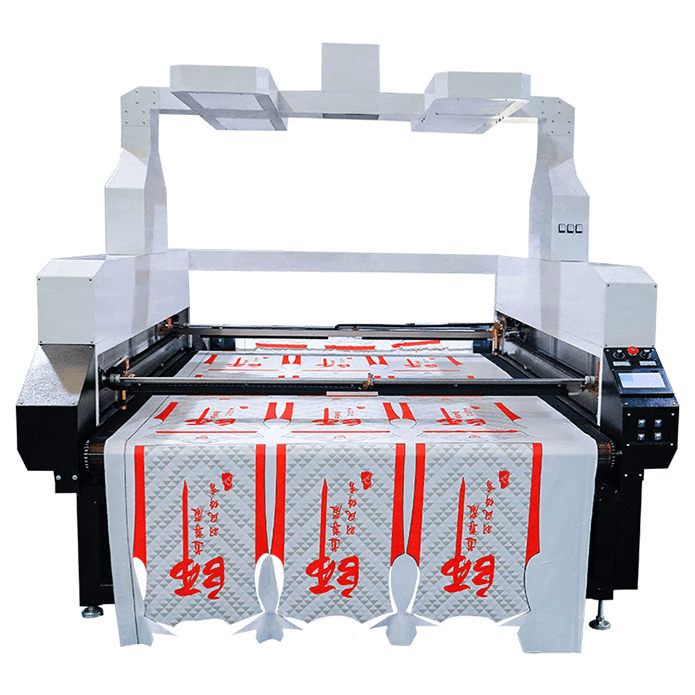CCD (Charge-Coupled Device) Laser Cutting Machines are sophisticated pieces of equipment used in various industries for precision cutting tasks. Proper maintenance of these machines is essential to ensure their longevity, efficiency, and safety. This guide outlines the maintenance procedures for CCD Laser Cutting Machines to help operators keep them in optimal working condition.

Daily Maintenance:
Clean the machine thoroughly after each use to remove dust, debris, and residual materials. Use a soft brush or compressed air to clean the laser head, lenses, mirrors, and other components.
Check the alignment of the laser beam regularly to ensure accurate cutting. Misalignment can lead to subpar cutting quality and potential damage to the machine.
Inspect the cooling system, including the water tank, pump, and hoses, for any signs of leakage or blockage. Clean or replace filters as needed to maintain proper coolant flow and temperature.
Lubricate moving parts such as rails, gears, and bearings to prevent friction and ensure smooth operation. Use lubricants recommended by the manufacturer for optimal performance.
Verify the calibration of the CCD camera system to maintain accurate positioning and alignment of the cutting head. Recalibrate if necessary to correct any discrepancies.
Monitor the condition of the laser tube and replace it promptly if signs of degradation or reduced performance are observed. Regularly check for gas leaks and ensure proper ventilation in the laser tube compartment.
Weekly Maintenance:
Perform a thorough inspection of electrical connections, wiring, and components to identify any loose connections, frayed wires, or damaged parts. Tighten connections and replace damaged components as needed to prevent electrical hazards.
Check the alignment and focus of the laser beam using calibration tools provided by the manufacturer. Adjust the beam alignment and focus as required to maintain cutting precision.
Clean the laser optics, including lenses and mirrors, with specialized cleaning solutions and lint-free wipes. Avoid using abrasive materials or solvents that may damage the optical surfaces.
Inspect the extraction system, including filters and ducts, for any buildup of dust, smoke, or debris. Clean or replace filters and remove any obstructions to ensure proper ventilation and air quality.
Test the emergency stop function and safety interlocks to ensure they are functioning correctly. Replace any faulty components or sensors to maintain a safe working environment.
Monthly Maintenance:
Conduct a comprehensive check of all mechanical components, including motors, belts, pulleys, and drive systems. Replace worn-out parts and adjust tension as necessary to prevent excessive wear and tear.
Inspect the laser power supply unit for signs of overheating, voltage irregularities, or other anomalies. Clean the cooling fans and vents to ensure adequate heat dissipation and proper functioning of the power supply.
Clean and inspect the CCD camera lens and sensor for dirt, dust, or scratches. Calibrate the camera system if needed to maintain accurate positioning and alignment.
Perform a test run of the machine with a calibration pattern to verify cutting accuracy and quality. Make any necessary adjustments to the cutting parameters or machine settings to optimize performance.
Annual Maintenance:
Schedule a professional service and inspection of the Laser Cutting Machine by qualified technicians. This comprehensive maintenance check should include a thorough examination of all components, calibration of critical systems, and performance testing.
Replace worn-out or consumable parts such as laser tubes, lenses, mirrors, and filters according to the manufacturer's recommendations.
Review and update the machine's software and firmware to the latest versions provided by the manufacturer. This ensures compatibility with new features, improvements, and safety enhancements.
Regular maintenance of CCD Laser Cutting Machines is essential for maximizing productivity, ensuring cutting quality, and prolonging the lifespan of the equipment. By following the recommended maintenance procedures outlined in this guide, operators can minimize downtime, prevent costly repairs, and maintain a safe working environment for personnel. Always refer to the manufacturer's guidelines and consult with qualified professionals for any maintenance or servicing tasks beyond routine checks and adjustments.